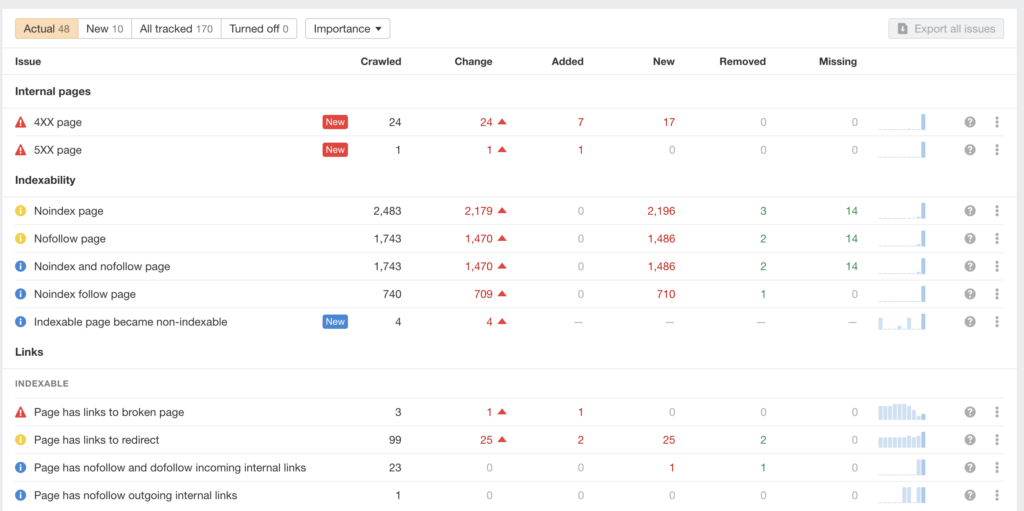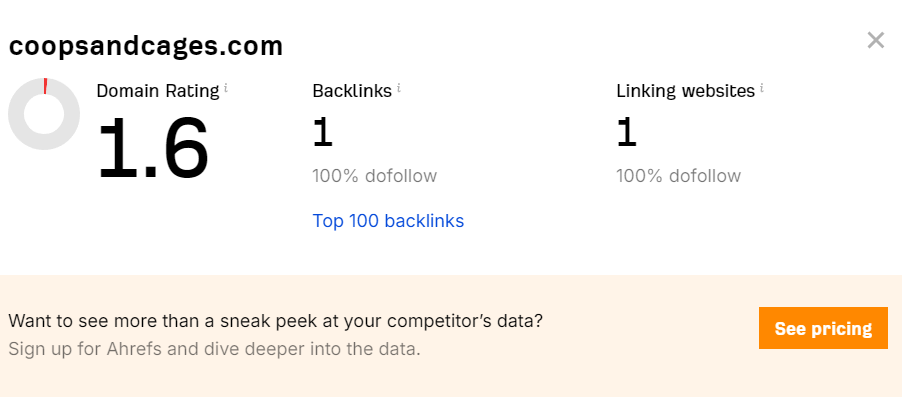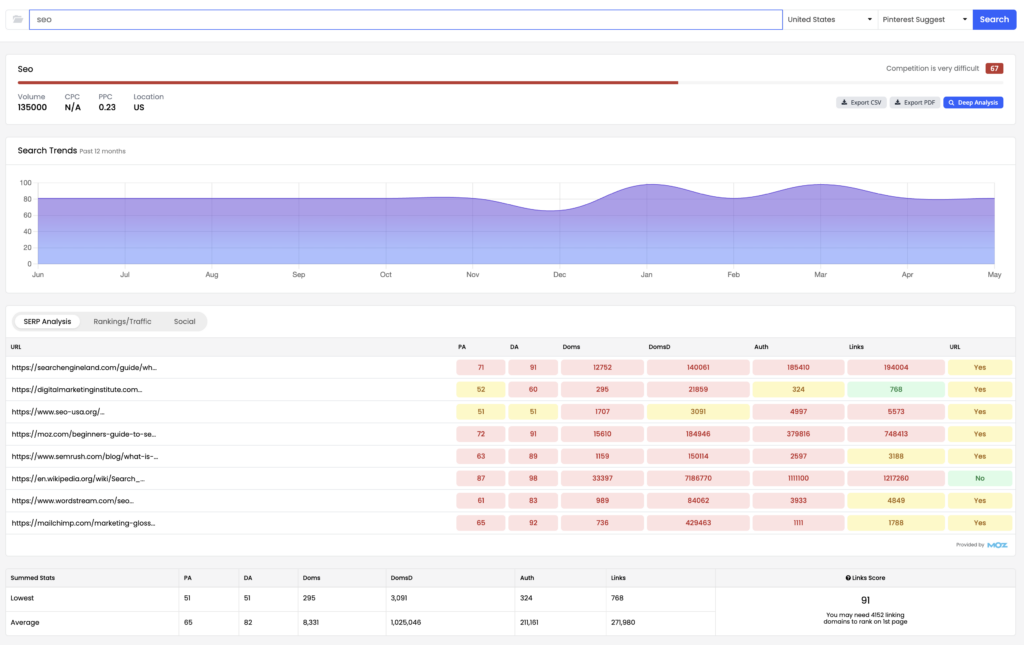Are you tired of creating more and more content, pouring hours of your life into your website, only to end up with little to no traffic to show for it? Well, you are not alone.
Most people struggle with website traffic at one point or another, whether it is getting their initial visitors or seeing their Google Analytics page flatline after some initial encouragement.
I’ve been there too. Through my journey, I’ve learned of several mistakes that you might be making that are affecting your traffic. More importantly, we need to know the easy steps to fix the issues.
Let’s cover the following nine common reasons why your website doesn’t get traffic.
1. Technical Issues
A lot of people don’t think of the technical side of their website because they are not clearly visible. But, the technical side will greatly influence the way that search engine crawlers see your website.
If you have technical issues, your website may not be indexed properly, resulting in poor visibility in search engine results pages (SERPs) and, ultimately, no organic traffic.
How do you figure out if you have technical issues?
Start by signing into your Google Search Console and check if you have any manual penalties, fix them, and let Google know that you’ve done it.
Next, check if you have not indexed your website by mistake. You can use the Detailed SEO Extension for Chrome.
Next, you want to run a site audit on your website. You can use Ahrefs. It’s completely free, and it gives you an overview of all the issues on your website, from links that don’t work to images not loading properly and even solutions on how you fix it.

The last reason can be that Google simply can’t crawl your website or hasn’t gotten there yet. This is super easy to check in your Google Search Console; just add your URL to the top search. Here, you’ll get a quick report if there are any issues.
If there are no issues, you can request indexing, and your page will be added to a priority crawl list.
Although it can be intimidating to deal with technical SEO, this is something that you generally only have to do once. If everything is set up correctly, the maintenance that you need to do as you continue will be minimal.
2. Weak On-Page SEO Performance
Your on-page SEO tells search engines like Google what your online content is about.
If you don’t have on-page SEO, or it is done incorrectly, Google may misunderstand what your content is about and show it to the wrong people, which means you will get no clicks.
If someone is looking for new backpacks for school and your article about backpacking destinations in Italy shows up, they have reason to read through your article.
But don’t over-optimize either, as this can indicate that your site is spammy and affect your search rankings, too.
Try conducting an SEO audit to see if there are any issues.
Keep it simple. Ensure your target keyword is part of the URL, title, meta description, and intro.
Ensure you have internal and external links in your content, and make sure your headings are descriptive.
That’s it.
If you are using a WordPress website, I highly recommend installing the Rank Math plugin. It will give you simple information and recommendations to improve your on-page SEO, even giving you a score out of a hundred.
3. Subpar Backlink Profile
Even though Google has stated that backlinks are not important, many have found that this is not the case.
High-quality backlinks tell search engines like Google that your website is trustworthy. In doing so, they build your site authority, which causes you to rank higher.
Similarly, spammy backlinks can negatively affect your authority.
There are hundreds of tools that you can use to see if you have poor-quality backlinks. Ahrefs, SEMrush, and Moz, are all very popular.

If you notice that you have any low-quality backlinks, you can disavow them. If you don’t have a lot of backlinks in general, you can start building a strategy to get more.
Reach out to people through outreach platforms such as these HARO alternatives to share your expertise and get mentions. Create compelling and shareable content that will make people want you for guest blogging and encourage them to share your work naturally.
But always remember quality over quantity.
4. Targeting Highly Competitive Keywords
Highly competitive keywords can be very appealing because they often have a high search volume. You might also want to target them to create core content that people can refer to.

However, if you are a new website or have no high-quality backlinks, you will never be able to rank well for these keywords. So, you need to find keywords with high traffic and low competition.
I love to use keyword tools like Ahrefs or LowFruits, which are easy to use and give you a keyword difficulty score.
It will probably be easier for you to find relevant keywords that are easy to rank for, or low-hanging fruit keywords if you focus on long-tail keywords.
I highly recommend creating a topical map as part of your keyword strategy and creating content clusters starting with these low-competition keywords. This will not only help with content organization, but will help you get your authority up over time.
However, I also recommend pulling out your phone, going to your blog, and choosing several blog posts. Be honest about your user experience.
You can solve issues with speed using plugins like WP Rocket to minify code and make use of caching. But navigation may need a little more work on your part to improve things like internal links.
5. Low-quality or Outdated Content
Content is king, especially since AI has allowed people to output content a lot faster than ever before. Thin content just does not cut it anymore; people would just ask ChatGPT about that.
If you have thin or outdated content, search engines will be able to tell from the resulting high bounce rates and poor engagement. Over time, they will stop promoting your content.
I recommend auditing your content regularly to figure out if there is anything you need to update or get rid of.
When creating valuable content, make sure that you cover as much of the topic as you can and add your own unique information from personal experience.
Utilize powerful tools like Grammarly to make sure that you catch any errors and create the best content that you possibly can.
6. Imbalance Between Content Creation and Promotion Efforts
Even if you create amazing content, you might not be spending enough of your efforts on promotion. This means that your content will not reach its full potential.
To figure out if you should be spending more of your efforts on promotion, look at metrics such as social shares and backlinks. You may also notice stagnant traffic levels even though you are creating new content.
Identify how you can improve your content promotion and create a strategy. You need to consider your target audience to determine whether you need to do something like social media marketing or whether email marketing and content syndication might be better.
7. Unappealing Headlines and Meta Descriptions
Your headlines and meta descriptions are the first things that people see in SERPs. Even if they are SEO-optimized, they might not be appealing.
This will result in a low click-through rate and, over time, a drop in search engine rankings.
Try to consider search intent once again and what your target audience is looking for to figure out what they will click on.
If you are unsure, look at the top-ranking articles to gather inspiration for your alterations, or use a plugin like Rank Math for recommendations.
If possible, it might be a good idea to test different headline and meta description combinations with A/B testing to figure out what the most effective combinations are.
8. Poor User Experience (UX)
User experience (UX) is critical for your website. If you have slow loading times, confusing navigation, and a non-responsive design, visitors can get frustrated.
A lot of people create their websites on computers but forget that most people who will be using their websites will do so on a mobile device.
You can conduct a user experience audit to see whether or not this may be an issue. Google PageSpeed Insights can give you all the information that you need.
9. Neglecting Social Media Presence
Social media is a great way to drive traffic to your website and engage with your audience. It would be foolish to neglect it as part of your content marketing strategy.
I highly recommend making use of the social media platforms that your target audience may find themselves on. You may find that you can repurpose a lot of your existing content, making it an easy win.
You can figure out if your social media presence is working by keeping an eye on your referral traffic.
Why is Website Traffic Important?
There are several reasons why higher website traffic is important.
Of course, there are the basics, like the fact that it expands your reach, leading to more conversions, regardless of the purpose of your website.
This ultimately means that you have a higher potential income and more monetization opportunities, such as for affiliate marketing.
However, higher website traffic will also determine your search engine rankings further down the line. This means that your authority may increase.
Lastly, more traffic will give you more insights into your users and will help you to tailor your content to them and make more strategic decisions in the future.
Key Performance Indicators and Metrics for Website Traffic
Here are some of the metrics that are important for website traffic. You can use them not only to determine whether or not your website is doing well but also to analyze your users and make decisions.
- Total Visits: The total number of people visiting your website within a specific time period.
- Unique Visitors: The number of individual users, or unique people, who visit your website within a specific time period.
- Pageviews: The total number of pages viewed by visitors on your website.
- Bounce Rate: The percentage of visitors who left your website after viewing only one page.
- Average Session Duration: The average amount of time visitors spend on your website during a single session.
- Traffic Sources: Where your website traffic is coming from, such as search engines, social media, referral sites, or direct traffic.
- Conversion Rate: The percentage of website visitors who complete your desired action, such as making a purchase or filling out a form.
- Click-Through Rate (CTR): The percentage of people who click on a specific link or ad compared to the total number of people who see it.
Proactive strategies to prevent traffic loss
No one wants a sudden dip in traffic, so it is important to be proactive and prevent the loss wherever possible.
Make sure that you regularly update your website and add high-quality content. Focus on SEO optimization by improving what you already have and targeting the right keywords for new content.
Don’t let technical issues grow because you are unsure of how to deal with them. Instead, fix broken links and disavow spammy backlinks as they appear. Also, make sure that you request indexing of all new content.
Lastly, focus on growing your traffic from new sources all the time. Keep interacting with your users to make sure you understand the latest trends.
And keep learning. The world of SEO is always changing. I recommend checking out these podcasts that I have listened to for the latest information or signing up for SEO newsletters.
Join 900+ to receive a weekly SEO video from my YouTube channel, which I’ll share, and an actionable SEO tip every week.
Wrap-Up
If your website traffic has dropped, there are some simple fixes that could help you get back on track. But the best thing you can do is be proactive.
Remember that website traffic is an important indicator of your impact and can influence the future of your website.
For more simple tips and encouragement, sign up for my newsletter. And remember that these things take time, so do not be discouraged.
FAQ
Why is my website not getting enough traffic?
Your website might not be getting enough traffic for several reasons, including technical issues, poor search engine optimization, low-quality content, lack of promotion, or targeting highly competitive keywords.
Why is my website getting impressions but no clicks?
Your website may be getting impressions but no clicks because your headlines and meta descriptions are not compelling enough.
To improve your click-through rate, you should try optimizing your headlines and meta descriptions to better reflect your content.
How long does it take to increase website traffic?
How long it takes to increase your website traffic can vary depending on various factors, including the competitiveness of your niche, the effectiveness of your strategies, and the consistency of your digital marketing efforts.
Does paid traffic to my website improve its search engine rank?
Paid traffic to your website may not directly improve its search engine rank, but it can increase your website’s visibility and traffic in the short term.


